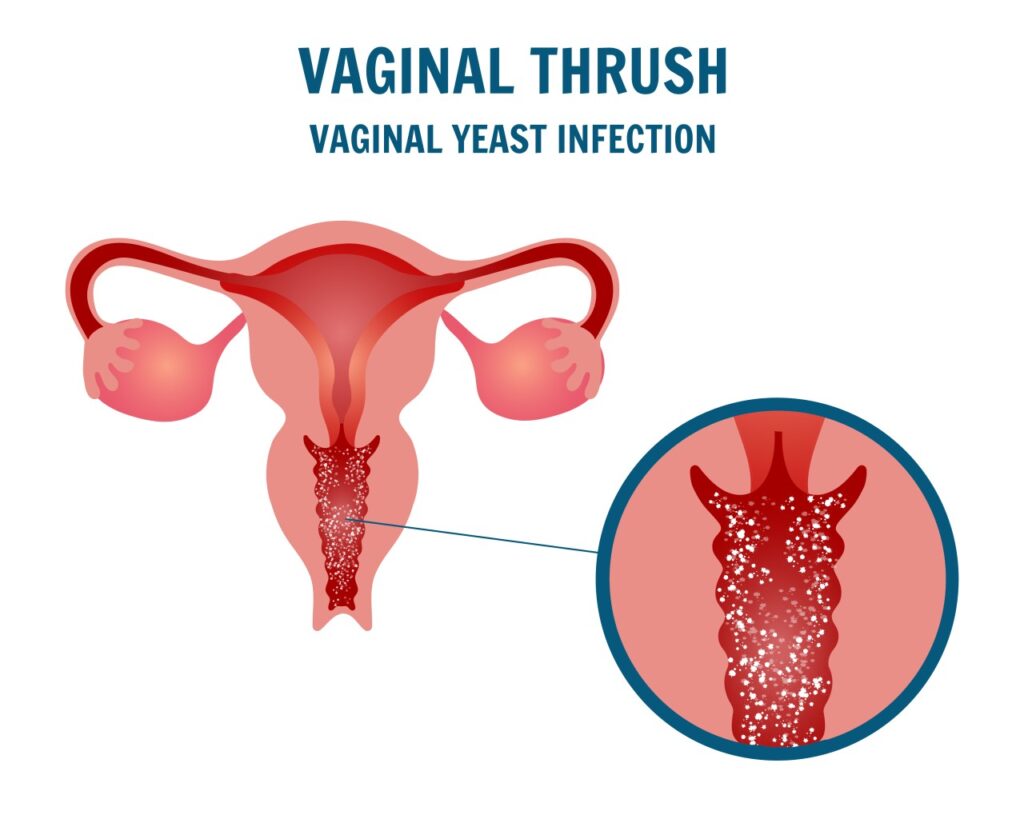Vaginal Infections

Vaginal infections are common conditions that can cause discomfort and irritation in the vaginal area. One type of vaginal infection is known as a yeast infection, which is caused by an overgrowth of the fungus Candida albicans.
Yeast infections can occur for various reasons, including changes in hormone levels (such as during pregnancy or menstruation), antibiotic use, diabetes, weakened immune system, or wearing tight-fitting clothing or wet bathing suits for extended periods.
Symptoms of a yeast infection may include itching and irritation in the vaginal area, burning sensation during urination or intercourse, redness or swelling of the vulva, and a thick, white, odorless vaginal discharge that resembles cottage cheese.
Diagnosis of a yeast infection is usually based on symptoms and a physical examination of the vaginal area. In some cases, a healthcare provider may take a swab of vaginal discharge to examine under a microscope or send for laboratory testing to confirm the presence of yeast.
Treatment for yeast infections typically involves antifungal medications, which can be applied as creams, ointments, suppositories, or taken orally. Over-the-counter antifungal treatments are available, but it’s essential to consult with a healthcare provider for proper diagnosis and treatment recommendations.
In addition to antifungal medications, there are steps you can take to prevent yeast infections, such as wearing cotton underwear, avoiding tight-fitting clothing, practicing good hygiene (including wiping from front to back after using the bathroom), and avoiding unnecessary use of antibiotics.
